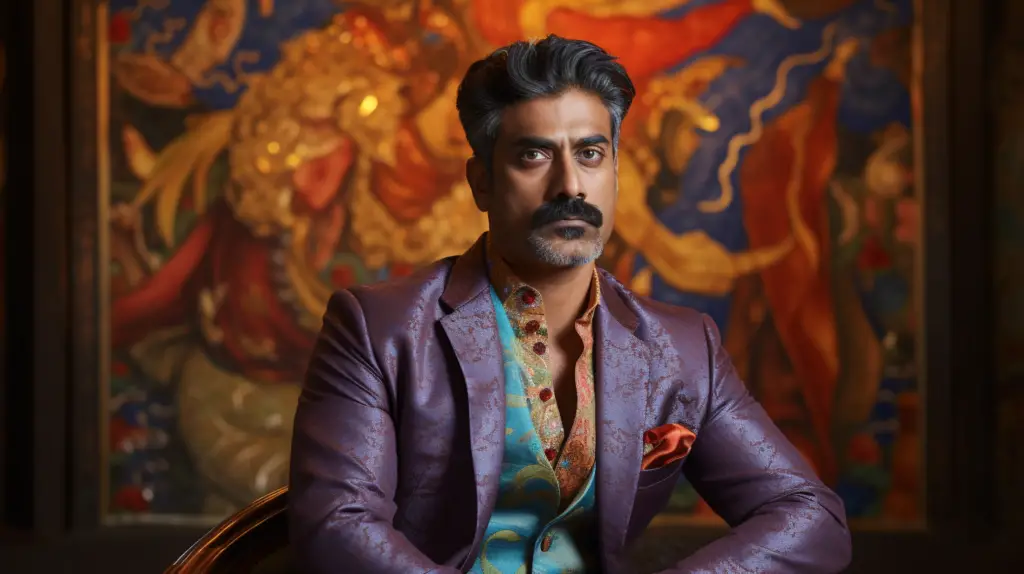Bollywood is known for its opulent sets, vibrant colors, and larger-than-life productions. One of the unsung heroes in bringing these cinematic dreams to life is the art director. At the forefront of this creative endeavor in Indian cinema stood Nitin Chandrakant Desai, a versatile art director and production designer. His work garnered international recognition and significantly influenced the Indian film industry’s aesthetics. Nitin Desai passed away on August 2, 2023 at the age of 57. He is alleged to have committed suicide after company had gone bankrupt.

This article delves into 25 intriguing facts about Nitin Desai, his life, and the outstanding work that he accomplished.
1. Nitin Desai was born in 1961 in a humble Maharashtrian family. His early life was a far cry from the glamour of Bollywood that he would later come to define.
2. Desai graduated from Sir J.J. Institute of Applied Arts in Mumbai, where he laid the foundation for his successful career in film production design.
3. His career took off in the late 1980s, and since then, he has worked on over 100 Bollywood films, including “Devdas,” “Lagaan,” and “Jodha Akbar.”
4. He launched his production company, Nitin Desai Studio, also known as ND Studio, in 2005. This endeavor allowed him to exercise more creative control over his projects.
5. Desai’s work was not just limited to Bollywood; he worked in international projects as well. His contribution to “Gandhi, My Father” brought him international acclaim.
6. He was known for his meticulousness and attention to detail. His sets often included intricate designs that mimic the historical era they represented with uncanny accuracy.
7. For “Devdas,” Desai built a complete replica of a period haveli (mansion) in a Mumbai studio, demonstrating his extraordinary capabilities.
8. He won the National Film Award for Best Art Direction four times, a testament to his creative prowess and dedication.
9. In addition to films, Desai also designed sets for popular television shows, including “Bigg Boss” and “Kaun Banega Crorepati.”
10. Despite his busy schedule, Desai never missed an opportunity to give back to his community. He regularly offered workshops at his alma mater, inspiring the next generation of artists.
READ MORE: 25 Interesting Facts About Dr. APJ Abdul Kalam’s Life and Legacy
11. Desai had also ventured into the hospitality industry, opening a resort in Karjat, near Mumbai, built around sets used in his films.
12. His passion for art and history extended beyond his work. He owned a collection of vintage cars and period furniture.
13. His talent wasn’t limited to historical and period films. Desai showcased his versatility by working in contemporary movies like “Rangeela” and “Mission Kashmir.”
14. Desai’s dedication to authenticity often involved extensive research. For “Jodha Akbar,” he studied Mughal architecture and historical texts to ensure the set’s accuracy.
15. “Lagaan,” one of his most acclaimed projects, required constructing a full village from scratch in the arid landscapes of Bhuj, Gujarat.
16. Nitin Desai was not just an art director; he worn the hat of a producer as well. In 2009, he produced the Marathi film, “Harishchandrachi Factory,” which was India’s official entry for the Academy Awards.
17. Desai’s reputation allowed him to collaborate with some of the best talents in the industry, including directors like Ashutosh Gowariker, Sanjay Leela Bhansali, and Vidhu Vinod Chopra.
18. His penchant for grandeur and lavishness was visible in the set of “Mela,” where he created an enormous fairground complete with a functioning Ferris wheel.
19. Despite the digital revolution in set design, Desai remained a staunch believer in physical sets. He believed real sets contribute to a more authentic cinematic experience.
20. One of his most ambitious projects was the ‘Film City’ within his ND Studio, where he recreated a whole street of 1950s Bombay for the film “Once Upon a Time in Mumbai.”
READ MORE: 25 Fascinating Facts about India’s Love-Hate Relationship with Cats
21. His work on “Slumdog Millionaire,” though uncredited, was globally recognized. He was responsible for creating the Dharavi slum sets where most of the film was shot.
22. Desai’s talent was not confined to large-scale projects. His subtler works, such as the claustrophobic apartment in “A Wednesday,” were equally commendable.
23. The iconic Maratha Mandir theater seen in the film “Dilwale Dulhania Le Jayenge” was also a creation of Desai.
24. Beyond his professional life, Desai was a family man. His wife, the costume designer Neeta Lulla, often collaborated with him, creating a synergy of visuals and fashion in films.
25. Nitin Desai’s journey had been a testament to his belief that art, history, and culture can be preserved and popularized through films. His life and work inspired many to dream big and make those dreams a reality on the silver screen.
READ MORE: 25 Interesting and Controversial Facts about Surinder Shinda
Nitin Desai, with his artistic brilliance and unwavering dedication, had redefined the way we view Indian cinema. His vision and craft brought innumerable stories to life, each carrying a distinct aesthetic signature that transcends time and space. As we look back at his life and work, we are reminded of the magic of cinema and the people behind the scenes who make it happen. Nitin Desai’s story is an embodiment of hard work, passion, and a vision that continues to inspire future generations.


